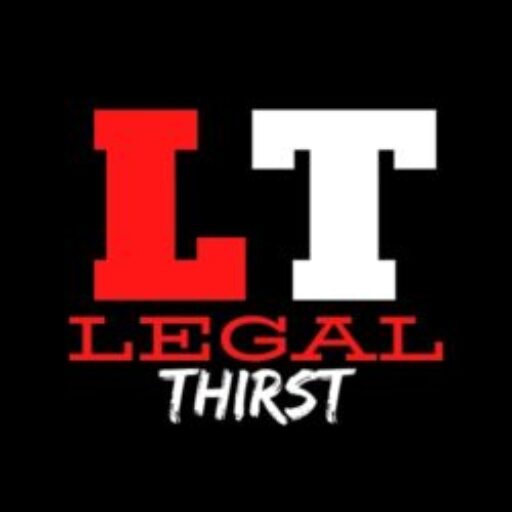-Bhawna Sood
Table of Contents
Introduction
Information Technology Act, 2000 is India’s mother legislation regulating the use of computers, computer systems, and computer networks as also data and information in the electronic format. This legislation has touched on varied aspects pertaining to electronic authentication, digital (electronic) signatures, cyber crimes, and the liability of network service providers.
The preamble of IT Act, 2000
The Preamble to the Act states that it aims at providing legal recognition for transactions carried out by means of electronic data interchange and other means of electronic communication, commonly referred to as “electronic commerce”, which involve the use of alternatives to paper-based methods of communication and storage of information and aims at facilitating electronic filing of documents with the Government agencies.
Information Technology Act, 2000 (IT Act, 2000)
The Information Technology Act, 2000 was enacted by the Indian Parliament in 2000. It is the primary law in India for matters related to cybercrime and e-commerce.
- The act was enacted to give legal sanction to electronic commerce and electronic transactions, to enable e-governance, and also to prevent cybercrime.
- Under this law, for any crime involving a computer or a network located in India, foreign nationals can also be charged
- The law prescribes penalties for various cybercrimes and fraud in digital/electronic format.
- It also gives legal recognition to digital signatures.
- The IT Act also amended certain provisions of the Indian Penal Code (IPC), the Banker’s Book Evidence Act, 1891, the Indian Evidence Act, 1872, and the Reserve Bank of India Act, 1934 to modify these laws to make them compliant with new digital technologies.
- In the wake of the recent Indo-China border clash, the Government of India banned various Chinese apps under the Information Technology Act.
Information Technology Amendment Bill, 2008
This Act was amended by Information Technology Amendment Bill, 2008 which was passed in Lok Sabha on 22nd December 2008 and in Rajya Sabha on 23rd December 2008. It received the assent of the President on 5th February 2009 and was notified with effect from 27/10/2009.
The IT Act of 2000 was developed to promote the IT industry, regulate e-commerce, facilitate e-governance and prevent cybercrime. The Act also sought to foster security practices within India that would serve the country in a global context. The Amendment was created to address issues that the original bill failed to cover and to accommodate further development of IT and related security concerns since the original law was passed. The IT Act, 2000 consists of 90 sections spread over 13 chapters [Sections 91, 92, 93, and 94 of the principal Act were omitted by the Information Technology (Amendment) Act 2008 and has 2 schedules.[ Schedules III and IV were omitted by the Information Technology (Amendment) Act 2008].
Salient features of the Information Technology (Amendment) Act, 2008
- The term ‘digital signature’ has been replaced with ‘electronic signature’ to make the Act more technology neutral.
- A new section has been inserted to define ‘communication device’ to mean cell phones, personal digital assistance, or a combination of both or any other device used to communicate, send or transmit any text video, audio, or image.
- A new section has been added to define cyber cafes as any facility from where access to the internet is offered by any person in the ordinary course of business to the members of the public. iv. A new definition has been inserted for an intermediary.
IT Act – 2008 Amendments
The IT Act, of 2000 was amended in 2008. This amendment introduced the controversial Section 66A into the Act.
Section 66A
- Section 66A gave authorities the power to arrest anyone accused of posting content on social media that could be deemed ‘offensive’.
- This amendment was passed in Parliament without any debate.
- As per the said section, a person could be convicted if proved on the charges of sending any ‘information that is grossly offensive or has a menacing character’.
- It also made it an offense to send any information that the sender knows to be false, but for the purpose of annoyance, inconvenience, danger, obstruction, insult, injury, criminal intimidation, enmity, hatred, or ill-will, through a computer or electronic device.
- The penalty prescribed for the above was up to three years imprisonment with a fine.
Arguments against Section 66A:
- Experts stated that the terms ‘offensive’, ‘menacing’, ‘annoyance’, etc. were vague and ill-defined or not defined at all.
- Anything could be construed as offensive by anybody.
- There was a lot of scope for abuse of power using this provision to intimidate people working in the media.
- This also curbed the freedom of speech and expression enshrined as a fundamental right in the Constitution.
- The section was used most notably to arrest persons who made uncharitable remarks or criticisms against politicians.
Case Law: Shreya Singhal v Union of India case (2015).
The government contended that the section did not violate any fundamental right and that only certain words were restricted. It stated that as the number of internet users mushroomed in the country, there was a need to regulate the content on the internet just like print and electronic media. The Supreme Court, however, in 2015, struck down this section of the IT Act saying it was unconstitutional as it violated Article 19(1) (a) of the Constitution.
Section 69A
- Section 69A empowers the authorities to intercept, monitor, or decrypt any information generated, transmitted, received, or stored in any computer resource if it is necessary or expedient to do so in the interest of the sovereignty or integrity of India, defense of India, the security of the State, friendly relations with foreign states or public order or for preventing incitement to the commission of any cognizable offense or for investigation of any offense.
- It also empowers the government to block internet sites in the interests of the nation. The law also contained procedural safeguards for blocking any site.
- When parties opposed to the section stated that this section violated the right to privacy, the Supreme Court contended that national security is above individual privacy. The apex court upheld the constitutional validity of the section. Also, read about privacy laws and India.
- The recent banning of certain Chinese Apps was done citing provisions under Section 69A of the IT Act.
Note: – The Indian Telegraph Act, of 1885 allows the government to tap phones. However, a 1996 SC judgement allows tapping of phones only during a ‘public emergency’. Section 69A does not impose any public emergency restriction on the government.
Information Technology Intermediary Guidelines (Amendment) Rules, 2018
The Rules have been framed under Section 79 of the Information Technology Act. This section covers intermediary liability.
- Section 79(2) (c) of the Act states that intermediaries must observe due diligence while discharging their duties, and also observe such other guidelines as prescribed by the Central Government.
- Online Intermediaries:
- An intermediary is a service that facilitates people to use the Internet, such as Internet Services Providers (ISPs), search engines, and social media platforms.
- There are two categories of intermediaries:
- Conduits: Technical providers of internet access or transmission services.
- Hosts: Providers of content services (online platforms, storage services).
- Information Technology Intermediary Guidelines (Amendment) Rules were first released in 2011 and in 2018, the government made certain changes to those rules
- In 2018, there was a rise in the number of mob lynchings spurred by fake news & rumors, and messages circulated on social media platforms like Whatsapp.
- To curb this, the government proposed stringent changes to Section 79 of the IT Act.
Case Laws:
- Tehseen S. Poonawalla case (2018): SC said that authorities have full freedom to curb the dissemination of explosive and irresponsible messages on social media, that could incite mob violence and lynchings.
- Prajwala Letter case (2018): SC ordered the government to frame the necessary guidelines to “eliminate child pornography, rape and gang rape imagery, videos, and sites in content hosting platforms and other applications”.
Conclusion
The government intends to make legal frameworks in order to make social media accounts under the law and protect people and intermediaries from misusing the same. The government wants to curb the spread of fake news and rumors, and also pre-empt mob violence/lynching. There is a need to check the presentation of incorrect facts as news on social media that instigates people to commit crimes.
There has been criticism of the Rules from certain quarters that say that the State is intruding into the privacy of the individual. Some also say that this law widens the scope of state surveillance of its citizens. These criticisms are notwithstanding the fact that the new Rules are in line with recent SC rulings.
Legal Thirst has created a telegram group for exchanging legal knowledge, Events, and various opportunities.
You can click on this link and join:
Follow Legal Thirst on Instagram and Subscribe to our YouTube channel for more amazing legal content.



